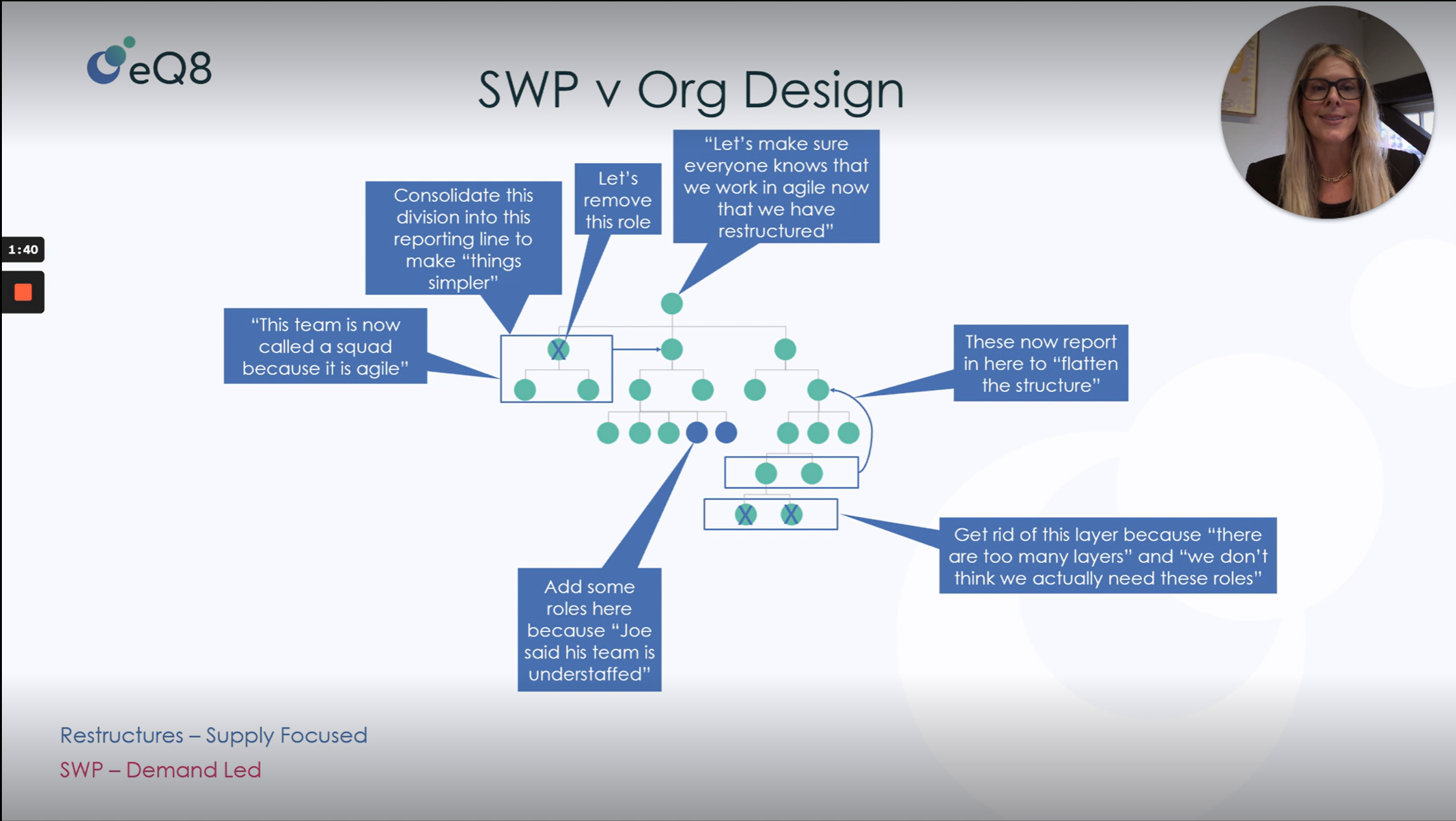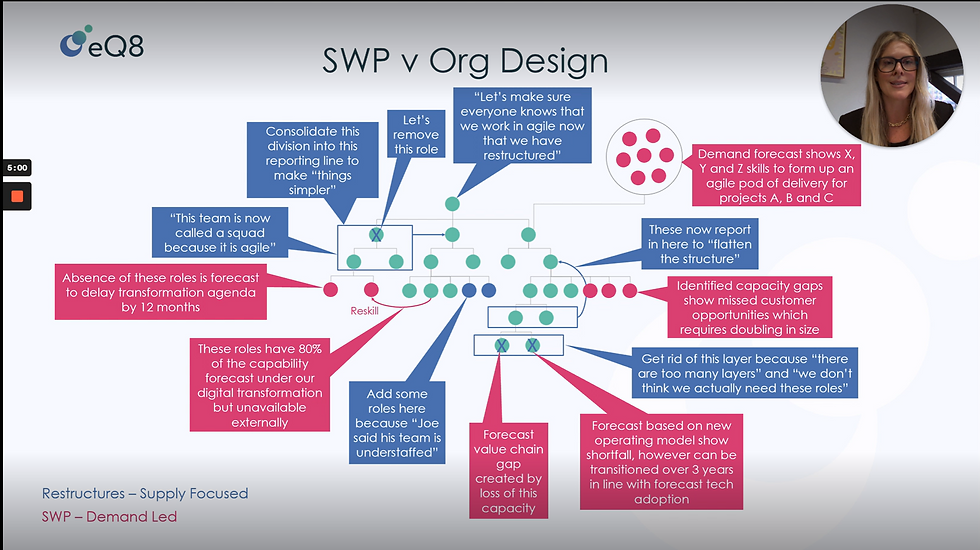Strategic Workforce Planning vs Organizational Design

What's the difference and which should I do first? Organizational design or strategic workforce planning? Strategic workforce planning then organizational design? There can be a lot of confusion between these two important disciplines and in which order to undertake them.
However, doing Org Design first is like putting the cart before the horse. It's moving things around without really knowing if they are even the right things in the first place. Not to mention, it generally does little to address skills.
That is why we recommend ALWAYS starting with the demand-led insights from strategic workforce planning, which gives clarity into exactly what size, skills and mix your workforce should be to align to your organization's strategic imperatives. Then you can then look at how to structure it appropriately.
Watch this short video to see what we mean.
Rather read? Jump to the transcript.
This transcript has been lightly edited for clarity.
Something that comes up a lot when we talk to people about strategic workforce planning is what is the difference between strategic workforce planning and organizational design? Or in what order should I do strategic workforce planning versus organizational design?
The video above shows a great example of what happens in a fictional organization if we rely strictly on organizational design instead of strategic workforce planning.
Relying Strictly on Organizational Design
In the video, we show an example of a simplified organizational structure, but it's representative of what most organizations have with reporting layers and levels in a hierarchical nature. The dynamic that typically plays out for these structures for many organizations looks a bit like this:
- Let's combine divisions into another reporting line to make things simple.
-
Let's remove this role. We don't need that anymore now that that's reporting into this other division.
-
Let's add some roles here for Joe. He's a squeaky wheel. He's always saying he's understaffed, so let's give him some extra resources.
-
We'll remove this entire layer. There are too many layers in our organization, and we don't need them.
-
I read a benchmarking report that said we should target X number of layers. So, let's flatten the structure by shifting this whole section into this reporting line here.
-
I think everybody's going agile now. That's the buzzword. I think we should do that too. Let's call this team a squad now and it's working in an agile way, and in fact we've restructured the whole organization and I think we're all agile now, so let everyone know that we're working in an agile way and we're an agile org.
You end up with something looking very much like this:

What Happens With Strategic Workforce Planning Instead?
The difference between strategic workforce planning and organizational planning is that strategic workforce planning is demand-led. It is translating the organization's strategic and operational goals into a workforce size (full-time-employee count) and shape (relevant skills) to understand how both need to align to the organization’s strategic and operational goals at the highest levels. Strategic workforce planning gives us a different picture.

Planning for the Future with Strategic Workforce Planning
Many organizations find themselves in permanent restructure and the reason for that is because they've never baselined their workforce to understand what size and shape it needs to be and how that aligns to their value, gained their competitive advantage, and identified what their strategic and operating imperatives are. Through strategic workforce planning, we also get that holistic view of the organization. We can understand things like reskilling opportunities, how to leverage different teams to deliver rather than a siloed view that organizational design and organizational restructures can take.
So, what strategic workforce planning really brings is a proactivity to the organization. We're able to look to the future and move from the reactive knee-jerk kind of decisioning that comes through a lot of organizational restructuring to really put us in a better place, not only from where our organization's heading and ensuring we're enabling that, but also from a socially responsible perspective as well. So strategic workforce planning and that demand-lead forecasting, which is the core of SWP, really enables organizations to achieve their success.
eQ8 recently ran a study with Aptitude Research on the current state of strategic workforce planning and have made this research available for those interested in learning more about the critical nature of strategic workforce planning.
